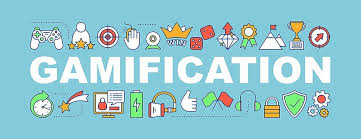
Gamification in eLearning has become a buzzword in the world of education and corporate training. Despite its popularity, there are several misconceptions about how it works and its potential benefits. Here we bust 11 common myths about gamification in eLearning to set the record straight.
Myth 1: Gamification is just about playing games.
Not true! Gamification incorporates game design elements into non-game contexts like eLearning. It’s not about playing games but using game-like mechanics to engage learners.
Myth 2: It’s only for the young or tech-savvy.
Gamification can appeal to learners of all ages. Properly designed gamified courses can engage anyone, regardless of their experience with technology.
Myth 3: Too much fun means not enough learning.
Gamification doesn’t replace educational content; it enhances engagement and motivation, making learning more effective.
Myth 4: It’s expensive to implement.
While some sophisticated systems may be costly, there are many cost-effective ways to gamify eLearning, such as leaderboards or point systems.
Myth 5: Gamification diminishes the importance of the subject matter.
On the contrary, gamification can increase the perceived value of content by making learning more engaging and memorable.
Myth 6: It’s just a trend that will soon fade away.
Gamification is based on solid learning principles such as reinforcement and spaced repetition; it’s here to stay as long as these principles remain effective.
Myth 7: Only certain subjects can be gamified.
Any subject matter can be gamified if it’s done thoughtfully and in alignment with learning objectives.
Myth 8: It makes learning too competitive.
Competition is just one gamification strategy among many. Collaboration and community challenges can also be employed to encourage teamwork and social learning.
Myth 9: All gamified courses are equal in quality.
Quality varies depending on how well the gamified elements support the learning goals and engage users without overshadowing the content.
Myth 10: Gamification is a one-size-fits-all solution.
Just like any other educational strategy, gamification requires customization to meet different learners’ needs and preferences.
Myth 11: Once you gamify a course, you can’t improve it further.
Gamification is not set in stone; it should be iterative with constant feedback loops for continuous improvement based on learner performance and experience.
Busting these myths helps understand that when implemented thoughtfully, gamification is a powerful method for enhancing eLearning programs in varied educational contexts.
